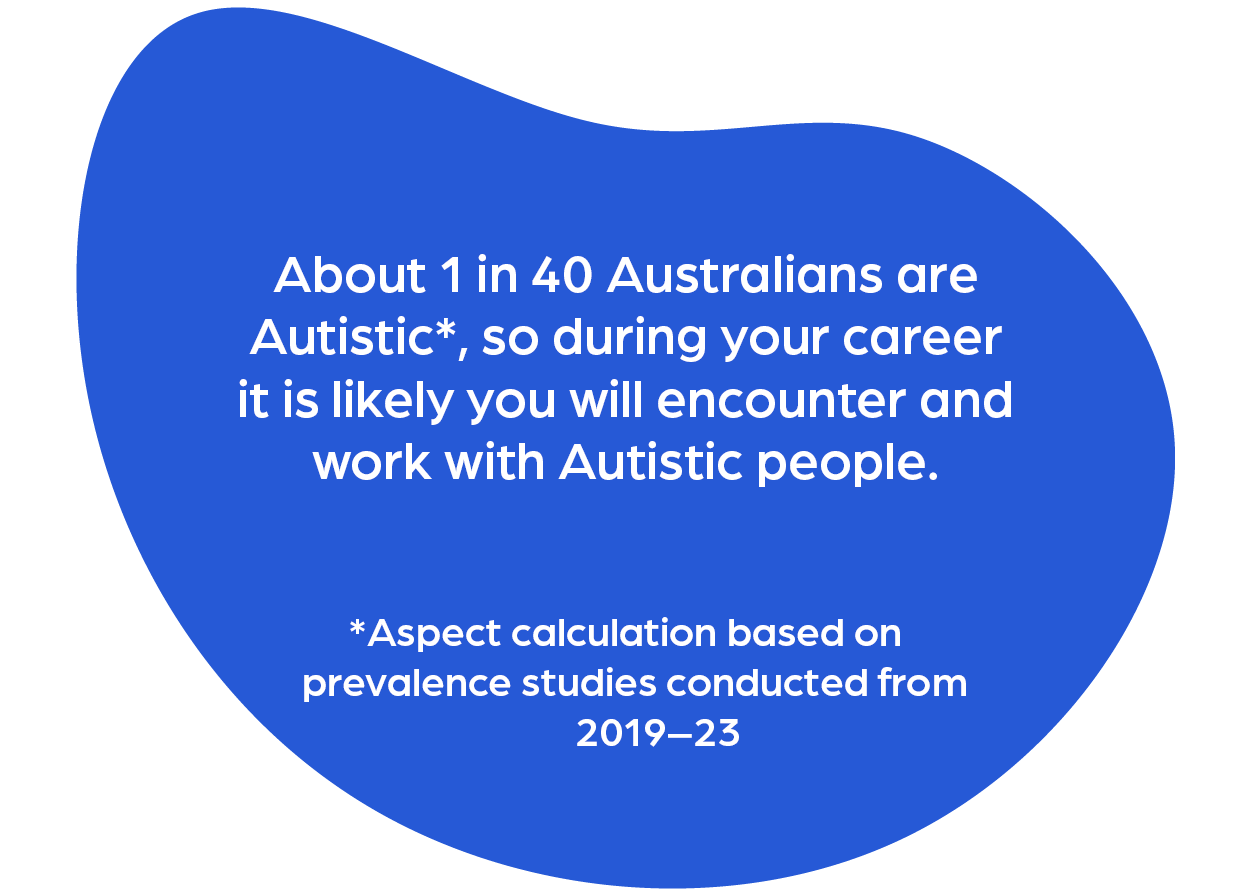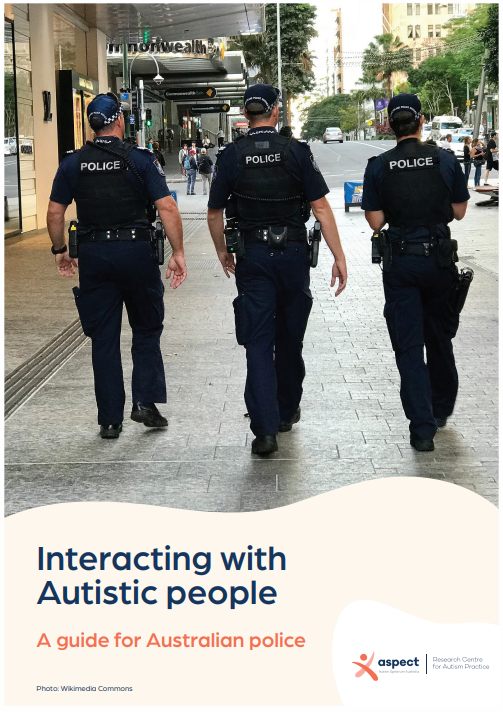Autistic people may interact with law enforcement in a variety of situations – as victims, witnesses, suspects or members of the community seeking assistance.

An understanding of autism can help officers:
• Communicate effectively and minimise misunderstandings
• Reduce the risk of escalating situations unnecessarily
• Provide appropriate support when interacting with Autistic individuals
• Build trust and confidence between police and the Autistic community.
Key things to remember
- The way you speak and behave with a person on the autism spectrum can make a big difference
- People on the spectrum are generally honest, follow rules and have a strong sense of justice
- People on the spectrum are likely to be very stressed and anxious when interacting with you, because the situation is unfamiliar
What to look out for
Everyone on the autism spectrum is different, but some indicators of autism might be:
Social and communication differences
- May need more time to process information or answer questions
- May talk very formally or in more detail than is usual
- May repeat what you say back to you rather than answering your question
- May have unusual eye contact (avoiding or intense staring)
- May have reduced or what may appear to you to be an inappropriate facial expression e.g. laughing for no apparent reason
Sensory sensitivity and repetitive behaviours
- May become agitated by bright lights, loud noises or other features of the environment
- May have unusual body movements like flapping their hands, rocking, pacing, flicking fingers
- May have an intense fascination with objects or seems preoccupied with a particular topic
Strategies for you
- Use direct language, with short and simple sentences
- Use a calm voice
- Avoid using sarcasm, figures of speech or slang
- Allow time to respond to questions, don’t repeat questions over and over
- Create a calm environment
- Turn off lights and sirens if possible
- Consider using alternative communication methods such as drawings, photos or digital devices
You should also consider seeking advice from the caregivers, neighbours or support staff who are present at the scene if possible.
What to know about meltdowns
They are: a way that a person on the autism spectrum may respond to stress.
Might look like: crying, physical aggression, thrashing about, rocking, pacing, or fainting.
What to do: if safe, allow meltdowns to pass. Do not restrain them, unless necessary for safety.
Interacting with Autistic people guide

Developed using research from the Aspect Research Centre for Autism Practice (ARCAP) and informed by best practice approaches, our 12-page guide supports Australian police in their interactions with Autistic people. It offers practical strategies to improve communication, recognise signs of autism, and ensure respectful, safe and effective engagement. Content includes:
- About autism
- Autistic characteristics
- What can police do during general encounters?
- Interviewing Autistic people
- When Autistic people go missing
Contact us
If you would like to know more about our law enforcement research and training, contact research@aspect.org.au.

